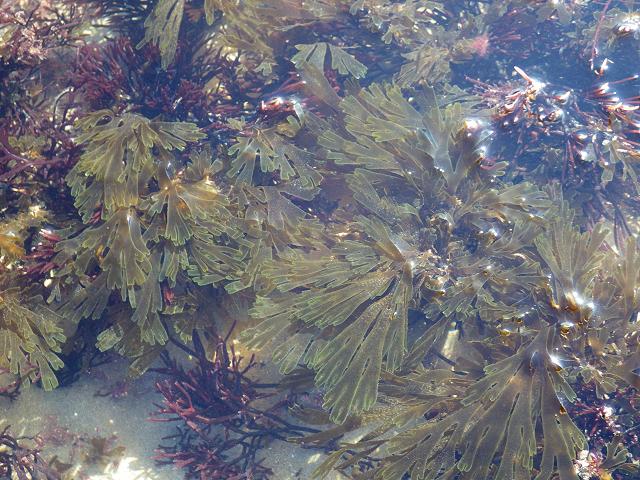
APHOTOMARINE
An educational resource dedicated mainly to the photography
and diversity of marine life that can be found in coastal waters
and intertidal areas of Great Britain and Ireland by David Fenwick.

Dictyota dichotoma (Hudson) J.V.Lamouroux, 1809 - Forkweed (Brown seaweed images)
Scroll down and rollover titles to change screen image or click on title to view image.
Forkweed
Dictyota dichotoma
- in lowershore pool 1
Dictyota dichotoma
- in lowershore pool 1
Forkweed
Dictyota dichotoma
- in lowershore pool 2
Forkweed
Dictyota dichotoma
- in lowershore pool 3
Forkweed
Dictyota dichotoma
- in lowershore pool 4
Forkweed
Dictyota dichotoma
- in lowershore pool 5
Forkweed
Dictyota dichotoma
- in lowershore pool 6
Specimens above photographed on the lowershore at Marazion, Cornwall. 01.02.10; also at Chimney Rocks, Penzance, Cornwall, on the middleshore.
Forkweed
Dictyota dichotoma
- sporangia 1
Forkweed
Dictyota dichotoma
- sporangia 2
Material for above collected from Chimney Rocks, Penzance, Cornwall, 09.05.17.
Forkweed
Dictyota dichotoma
- antheridia on male thallus 1
Material collected from the lowershore at Albert Pier reef, Penzance, Cornwall, 09.10.10.
Forkweed
Dictyota dichotoma
- thallus 1
Numerous specimens found on the shore below Caerthillian Slopes, Lizard, Cornwall, 02.06.11.
The microscopic brown algae Myriactula stellulata can sometimes be found as an epiphyte low down on the thallus of Dictyota dichotoma.
Scientific and European Names:
Dictyota dichotoma, Forkweed, Divided Net Weed, Brown Fan Weed, Forkweed, Gemeine Gabelzunge, Gaffelwier, Dictyote, Alga bifurcada, Cornicella.
AlgaeBase is a database of information on algae that includes terrestrial, marine and freshwater organisms.

The main objective of this website is in furthering environmental awareness and education through the medium of photography. To increase awareness and access to the wildlife of the region and help
people find and identify it. Sometimes the difference between species is obvious but many species can only be determined by observing microscopic characteristics that are specific to any one species.